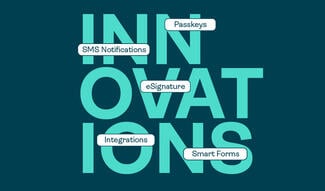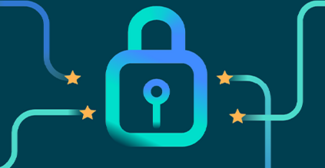6 megatrends are shaping the enterprise landscape of Web 3.0 — where are you?

If there’s anything we’ve learned in the last few years, it’s that we’re hardwired for resiliency. It’s in our nature to seek solutions and to adapt, whether as family members, friends, social communities, or enterprise leaders. Perhaps that’s why we’ve also learned so much recently about the value of trust.
Trust is not just the connective tissue between us as social beings. It’s also the engine of business. Naturally, that doesn’t mean everybody trusts everybody. Nor should they, in a world of competing priorities and goals. What it does mean is that we have a collective understanding of the mechanisms required to establish trust when it adds value to a relationship.
Philosopher Marshall McLuhan famously said that “the medium is the message.” Of course that was back in pre-internet days, but it’s still true today in connection with the customer journey across heterogeneous cloud technologies — many of them insecure. If that medium is fragmented, then so, inevitably, is trust.
Broadly speaking, Web 1.0 was about one-way consumption of information. With web 2.0, we have the first two-way exchanges of information, interactions, and transactions. Now, a collision of 6 megatrends removes the focus on information, and puts it squarely on the individual. That’s why trust — and securing that trust — is going to be the cornerstone of Web 3.0.
These trends have been years, sometimes decades in the making. Let’s dig into the context so we can understand what challenges we need to solve.
Megatrend #1: Digitization
The great digital shift is yesterday’s headline. But what often flies under the radar is the fact that the types of digital products and offerings now coming to market have fundamentally different requirements than the old point-and-click e-commerce environment.
Just as an example, products like home insurance, loan applications, private wealth management, all have higher service-level expectations because of the higher price and value of those transactions, and the increased complexity of the workflow associated with them.
What this means is that CIOs are increasingly challenged to put together a compelling customer experience, especially considering the patch quilt environment of SaaS applications.
Megatrend #2: Digital customer relationships
Today’s online customers need much more than a product carousel and a shopping cart. This is especially true in a world where so much online information is competing for action and attention. Now, customers are requiring digital relationships to conduct business.
This means that enterprises need to present a much more dynamic interaction model than the old e-commerce era — this has rapidly and suddenly become the number one focus of today's digital business officer. Enterprises need to provide a compelling user experience that drives customer satisfaction, entices the customer to purchase, and builds trust into the journey from beginning to end.
Megatrend #3: Going mobile
Mobile is now the preferred format for transacting online and that's not going away anytime soon. Enterprises will have to accommodate this form factor forever. While it’s okay for some transactions — OneSpan does millions and millions of them daily over the mobile form factor — it's not the best user experience for all digital offerings. The transaction doesn’t even need to be terribly complex before things start to go awry these days.
A short list of things that currently present horrible experiences on mobile include an alarming number of websites, fine print, drop-downs, password retrieval … In fact, today, it is illegal in many cases to use a mobile phone for complicated contracts, from a regulatory compliance standpoint.
If these easy things don’t work, the focus needs to be on figuring out how we get to a place where people can conduct high-value digital agreements using any device, whether it’s a workstation or simply the device that’s closest to hand.
Megatrend #4: Remote connections
For years, the business model for enterprises with complex product offerings centered on an important degree of face-to-face interactions. That’s why the “last mile” of customer satisfaction was conducted in physical environments — until everything suddenly moved online.
The thing is, it’s not just about products and consumers. Increasingly, entire workforces are also figuring out how to operate remotely, and this puts the notion of identity at the forefront of our considerations, given that “face to face” means something very different today than it used to.
The shift is happening now, and with Web 3.0, we will see an acceleration of the types of products coming online, because it will simply be the default purchase pattern by consumers who prefer to purchase online. The challenge is not only to present a seamless experience where remote consumers can shift from channel to channel with no loss of trust, but also to integrate the human touch—virtually, flexibly, and securely.
Megatrend #5: Identity theft
I’ve written before about the continuing evolution of the threat landscape, and the growing concern that hackers will increasingly manipulate the integrity of digital agreements and their underlying artifacts — essentially the foundation of business and our capital markets.
Cybercriminals and bad actor nation-states have taken advantage of the trend toward remote operations, attacking the enterprise infrastructure and end users themselves.
Some 50% of all US credit issued by banks is to people without a loan officer ever seeing them. Synthetic identities have become commonplace. In fact, today, identity theft and credential theft are collectively the number one cause of credit loss and fraud, with even greater implications from infrastructure compromised through the digital and mobile channels.
Clearly, robust processes for securing identity are non-negotiable for the Web 3.0 enterprise. Baking those processes into a customer journey that’s completely frictionless is still a challenge.
Megatrend #6: Global regulations
The cyber threat environment, coupled with the rise of the surveillance economy, has caused governments to act. Globally, they are now enacting a complex web of specific country-level identity, data privacy, and data sovereignty regulations as a result.
Although this is very much a moving target, what’s clear is this has made it increasingly complex to conduct cross-border transactions. Literally, the requirements of how you identify an end user change country by country. This is happening at a time when your newest competitor could be located almost anywhere in the world, which is why enterprises need to figure out how they can manage this complexity in a way that is both transparent and simple for their clients.
The way forward
These 6 megatrends are colliding at a time when an insecure internet is the primary channel of communication for enterprises engaging with clients. This is what’s driving today’s enterprises to pull together three elements: security, UX, and compliance. In today's hyper-connected, global, digital world, this is really hard. But the potential benefits are enormous.
How we get there starts with a reframing the very concept of digital agreements, so we are no longer focusing simply on end-point security, but on assuring the continuous integrity of the process throughout, from identity verification and continuous authentication, through to interaction, transaction, and storage of a non-repudiable audit trail and record of the agreement. In other words, the focus needs to shift from the artifacts of digital agreements, to the client at the center of the process.
In a world of corporate warfare, account takeover, and social engineering attacks, we return again and again to the notion of trust. The thing is, most enterprise are not cyber-security experts, and don’t fully understand the risks associated with growth in a Web 3.0 world — particularly business executives on the revenue-generating side of the business that typically don’t worry about security for a living. But by focusing on trust across their digital processes, enterprises will be in a better position to calibrate their investment in digital transformation initiatives, and find their place in the landscape of web 3.0.









